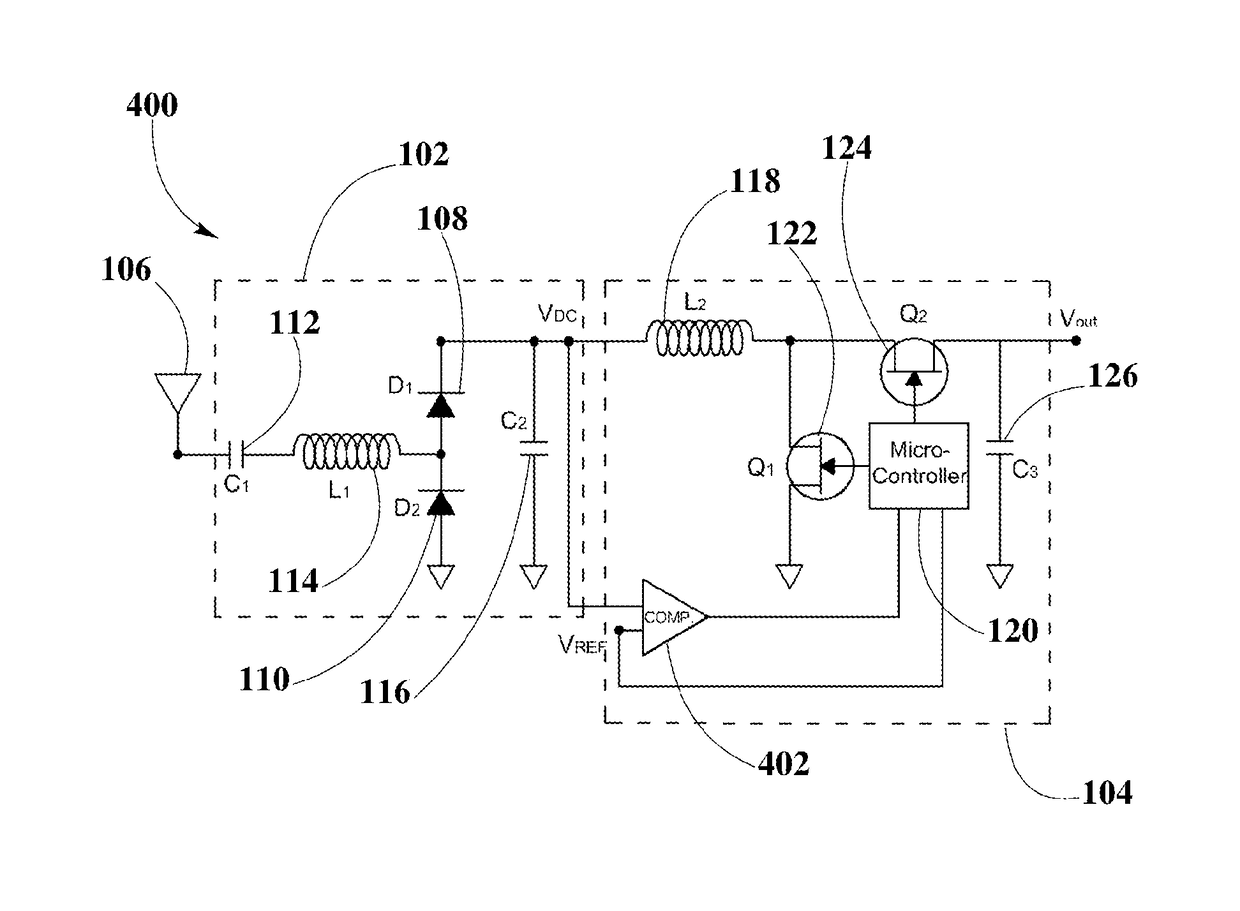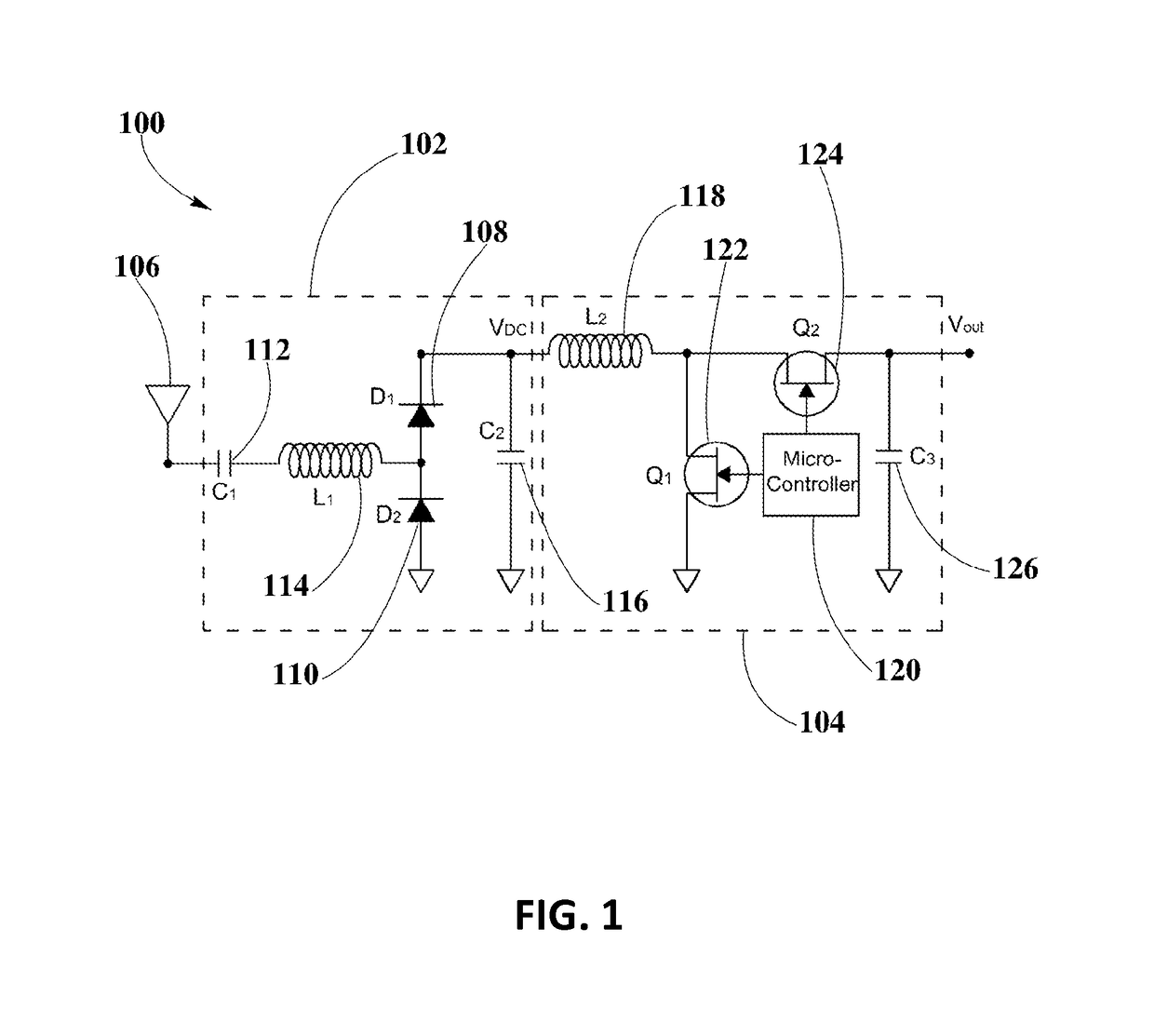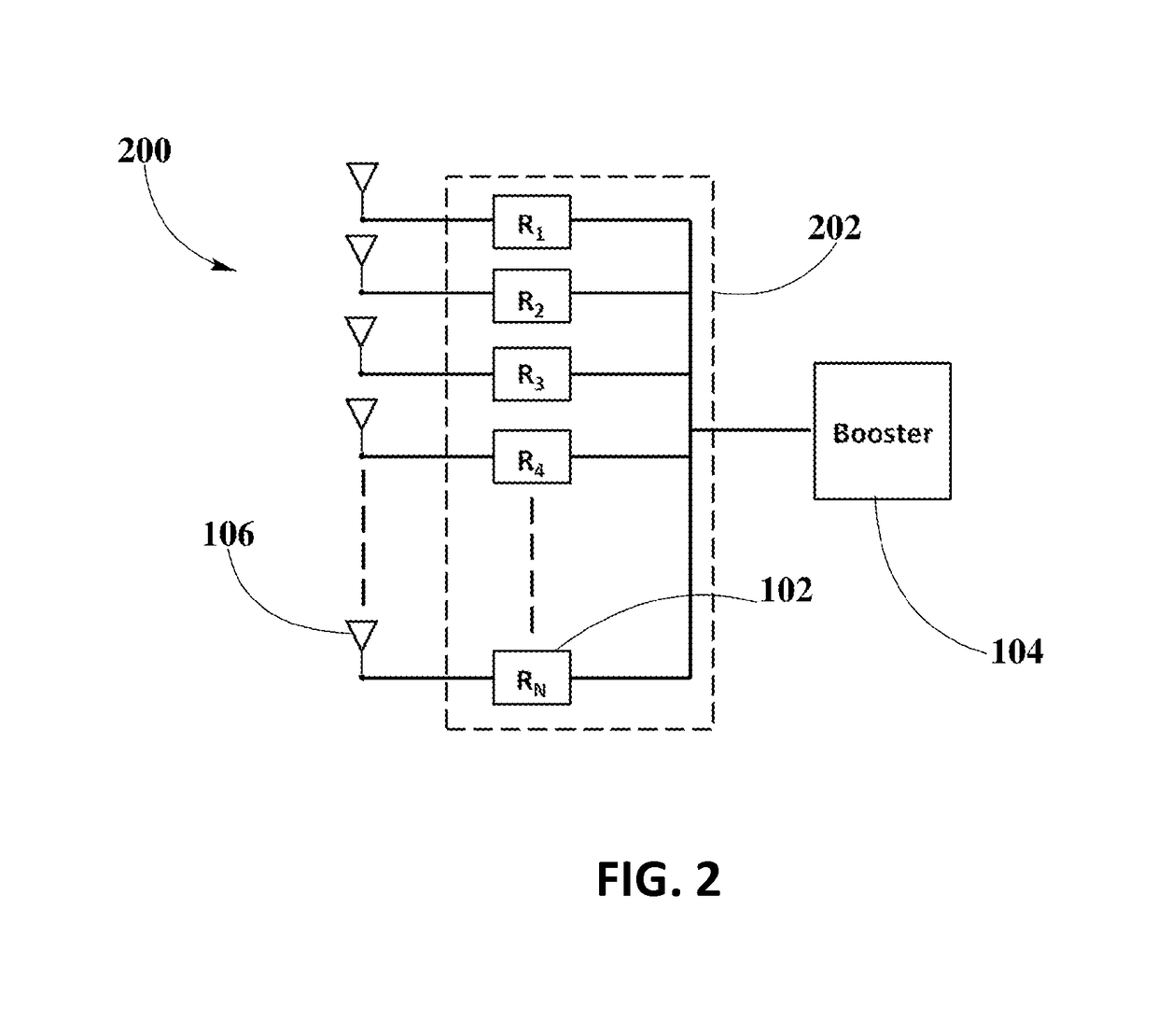Integrated rectifier and boost converter for wireless power transmission
a technology of boost converter and wireless power transmission, which is applied in the direction of electric variable regulation, process and machine control, instruments, etc., can solve the problems of ineffective diode efficiency, forward voltage drop, and inherently inefficient conductors, and achieve low associated heat loss, increase wireless power transmission efficiency, and low power loss characteristics
- Summary
- Abstract
- Description
- Claims
- Application Information
AI Technical Summary
Benefits of technology
Problems solved by technology
Method used
Image
Examples
Embodiment Construction
[0027]The present disclosure is here described in detail with reference to embodiments illustrated in the drawings, which form a part here. Other embodiments may be used and / or other changes may be made without departing from the spirit or scope of the present disclosure. The illustrative embodiments described in the detailed description are not meant to be limiting of the subject matter presented here.
Definitions
[0028]As used here, the following terms may have the following definitions:
[0029]“Electronic device” refers to a device depending on the principles of electronics and using the manipulation of electron flow for its operation. In present disclosure, refers to a device able to communicate using one or more suitable wireless technologies.
[0030]“Wireless receiver” refers to a device including at least one antenna element, at least one rectifying circuit and at least one power converter, which may utilize pockets of energy for powering, or charging a wireless device.
[0031]“Recti...
PUM
 Login to View More
Login to View More Abstract
Description
Claims
Application Information
 Login to View More
Login to View More - R&D
- Intellectual Property
- Life Sciences
- Materials
- Tech Scout
- Unparalleled Data Quality
- Higher Quality Content
- 60% Fewer Hallucinations
Browse by: Latest US Patents, China's latest patents, Technical Efficacy Thesaurus, Application Domain, Technology Topic, Popular Technical Reports.
© 2025 PatSnap. All rights reserved.Legal|Privacy policy|Modern Slavery Act Transparency Statement|Sitemap|About US| Contact US: help@patsnap.com



